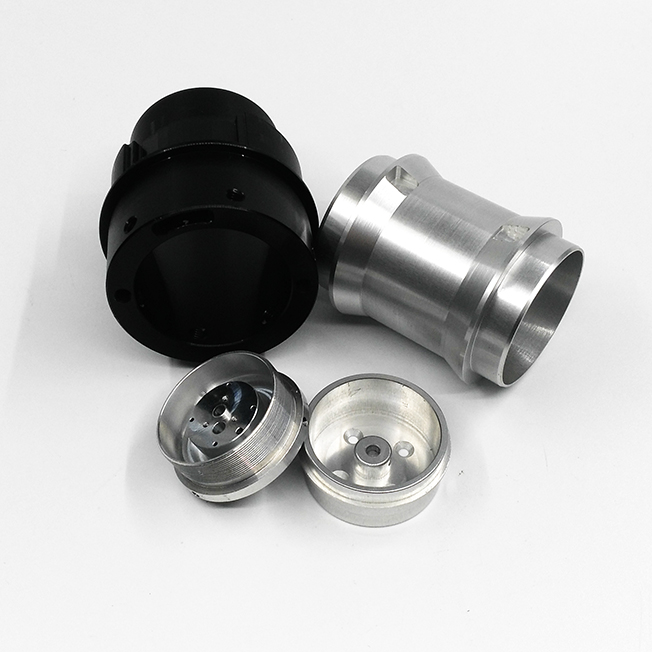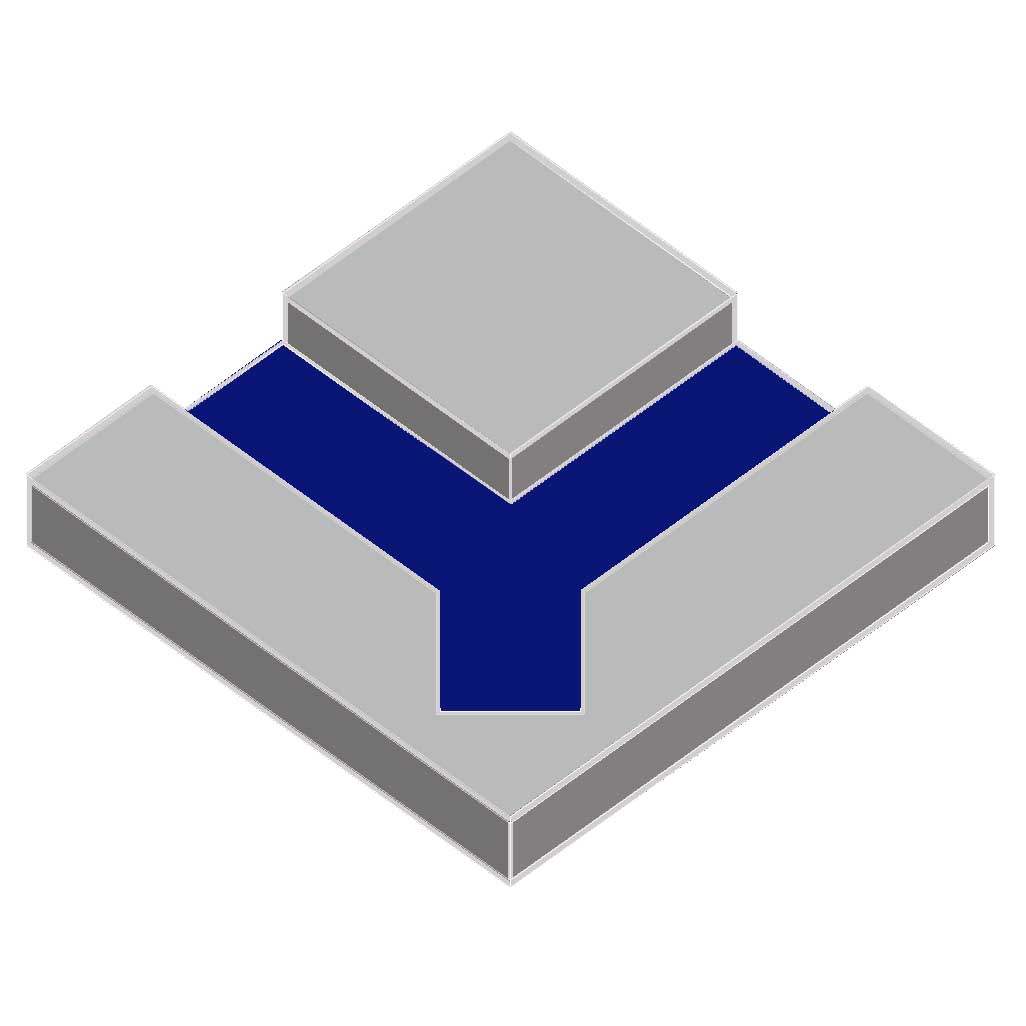(1) Shorten the single working hours
First, process measures to shorten the basic time. In mass production, since the basic time accounts for a large proportion of the unit time, productivity can be improved by shortening the basic time. The main ways to shorten the basic time are as follows:
1. Increasing the cutting amount, increasing the cutting speed, the feed rate and the amount of back cutting can shorten the basic time. This is an effective method to increase productivity widely used in
Machining. However, the increase in cutting consumption is restricted by the durability of the tool, the power of the machine tool, and the rigidity of the process system. With the emergence of new tool materials, the cutting speed has been rapidly improved. At present, the cutting speed of cemented carbide turning tools can reach 200m/min, and the cutting speed of ceramic tools can reach 500m/min. In recent years, the cutting speed of polycrystalline synthetic diamond and polycrystalline cubic boron nitride tools for cutting ordinary steel materials reaches 900m/min. In terms of grinding, the development trend in recent years is high-speed grinding and powerful grinding.
2. Multi-cutting is used at the same time.
3. This method of multi-piece processing is to reduce the cutting-in and cutting-out time of the tool or to overlap the basic time, thereby shortening the basic time of each part processing to improve productivity. There are three ways of multi-piece processing: sequential multi-piece processing, parallel multi-piece processing, and parallel sequential multi-piece processing.
4. Reduce machining allowance. Advanced technology such as precision casting, pressure casting, precision forging is used to improve the precision of blank manufacturing and reduce the machining allowance to shorten the basic time, sometimes even without machining, which can greatly improve the production efficiency.
Second, shorten the auxiliary time. Auxiliary time also occupies a large proportion of the time of a single piece, especially after the cutting amount is greatly increased, the basic time is significantly reduced, and the proportion of auxiliary time is even higher. Taking measures to reduce the auxiliary time at this time has become an important direction for improving productivity. There are two different ways to shorten the auxiliary time. One is to mechanize and automate the auxiliary actions, thereby directly reducing the auxiliary time; the other is to make the auxiliary time coincide with the basic time and indirectly shorten the auxiliary time.

1. Directly reduce the auxiliary time. The workpiece is clamped by a special fixture, the workpiece does not need to be aligned during the clamping, which can shorten the time of loading and unloading the workpiece. In mass production, high-efficiency pneumatic and hydraulic clamps are widely used to shorten the time for loading and unloading workpieces. In single-piece small batch production, due to the limitation of the manufacturing cost of special fixtures, in order to shorten the time of loading and unloading workpieces, modular fixtures and adjustable fixtures can be used. In addition, in order to reduce the auxiliary time of stop measurement during processing, an active detection device or digital display device can be used to perform real-time measurement during processing to reduce the measurement time required during processing. The active detection device can measure the actual size of the machined surface during the machining process, and automatically adjust the machine tool and control the working cycle according to the measurement result, such as an automatic grinding measurement device. The digital display device can continuously and accurately display the movement or angular displacement of the machine tool during the machining process or the adjustment process of the machine tool, which greatly saves the auxiliary time of the shutdown measurement.
2. Indirectly shorten the auxiliary time. In order to make the auxiliary time and the basic time overlap in whole or in part, a multi-station fixture and continuous processing method can be used.
3. Shorten the time of arranging the work place. Most of the time spent on arranging the work place is spent on changing tools. Therefore, the number of tool changes must be reduced and the time required for each tool change must be reduced. Improving the durability of the tool can reduce the number of tool changes. The reduction of tool change time is mainly achieved by improving the tool installation method and the use of tool mounting fixtures. Such as the use of various quick-change tool holders, tool fine-tuning mechanisms, special tool-setting templates or tool-setting samples, and automatic tool-changing devices, etc., to reduce the time required for tool loading and unloading and tool setting. For example, the use of indexable carbide insert tools on lathes and milling machines not only reduces the number of tool changes, but also reduces the time of tool loading and unloading, tool setting and sharpening.
4. Process measures to shorten the preparation and termination time. There are two ways to shorten the preparation and termination time: first, expand the production batch of products to relatively reduce the preparation and termination time allocated to each part; second, directly reduce the preparation and termination time. The expansion of product production batches can be achieved through standardization and generalization of parts, and group technology can be used to organize production.
(2) Carry out the supervision of multiple machine tools
Multiple machine tool care is an advanced labor organization measure. It is obvious that one worker can manage several machine tools at the same time to improve productivity, but two necessary conditions should be met: one is that if one person is taking care of M machines, the sum of the operating hours of workers on any M-1 machine tools should be less than the other The maneuvering time of a machine tool; the second is that each machine tool must have an automatic parking device.
(3) Using advanced technology
1. Rough preparation. The use of new technologies such as cold extrusion, hot extrusion, powder metallurgy, precision forging, and explosive forming can greatly improve the accuracy of the blank, reduce the workload of machining, save raw materials, and significantly increase productivity.
2. Special processing. For extremely hard, extremely tough, extremely brittle and other difficult-to-process materials or complex profiles, the use of special processing methods can greatly improve productivity. If the general forging die is used for electrolytic machining, the machining time can be reduced from 40 to 50 hours to 1 to 2 hours.
3. Use less and no cutting processing. Such as cold extrusion gears, rolling screws, etc.
4. Improve processing methods, reduce manual and inefficient processing methods. For example, in mass production, broaching and rolling are used instead of milling, reaming, and grinding, and fine planing, fine grinding, and diamond boring are used instead of scraping.
(4) Using automated manufacturing system
The automated production system is an organic whole composed of a certain range of processed objects, various equipment with a certain level of flexibility and automation, and high-quality people. It accepts external information, energy, funds, supporting parts and raw materials, etc. Under the joint action of the computer control system, a certain degree of flexible automated manufacturing is realized, and finally products, documents, waste materials and pollution to the environment are output. The use of automated manufacturing systems can effectively improve labor conditions, significantly increase labor productivity, greatly improve product quality, effectively shorten the production cycle, and significantly reduce manufacturing costs.
2. Design measures to improve machining productivity
When designing, under the premise of ensuring the performance of the product parts, the part structure should be made with good processing technology, and materials with good processing technology should be selected to reduce processing difficulties, increase labor productivity, and obtain good economic benefits.
(1) Improve the structural craftsmanship of parts
In order to make mechanical products have good structure and manufacturability, the following measures are often used in the design:
1. Improve the "three modernizations" of parts and components (standardization of parts, generalization of components, and product serialization), try to use the mastered process and standardized and serialized parts and components, and try to borrow from the factory's existing production The same type of parts makes the designed structure have good inheritance.
2. Use parts with simple surface geometry and arrange them on the same plane or on the same axis as much as possible to facilitate processing and measurement.
3. Reasonably determine the manufacturing accuracy of parts and the assembly accuracy of products. On the premise of ensuring the performance of the product, the manufacturing precision and assembly precision should be reduced as much as possible.
4. Increase the ratio of parts manufactured by non-cutting processing methods and parts manufactured by lower-cost cutting processing methods. Obviously, the larger the proportion of these two parts in the product, the better the manufacturability of the product.
(2) Choose a workpiece material with good cutting performance
The machinability of the workpiece material directly affects the cutting efficiency, power consumption and surface quality of the parts. When designing products, it is necessary to select workpiece materials with good cutting performance and take heat treatment measures that can improve the cutting performance of the material under the premise of ensuring the performance of the product, so as to increase productivity and reduce cutting costs.
Machinability of materials mainly depends on the physical and mechanical properties of the material. Generally speaking, materials with high strength and hardness, good plasticity and toughness, and poor thermal conductivity have poor cutting performance, and vice versa.
In actual production, heat treatment is often used to change the metallographic structure and mechanical properties of the material to improve the machinability of the workpiece material. For high-hardness cast iron, high-temperature spheroidizing annealing is generally used to spheroidize the flake graphite to reduce the hardness and improve the machinability of the material.
Improving the efficiency of machining production is not only an update of the process concept, but also an improvement of the management concept. Advanced cutting tools and machine tools are used to realize high-speed and efficient cutting. At the same time, related technologies and management methods are used to optimize the entire processing technology, and a variety of methods are used to improve processing efficiency and achieve high-speed cutting. Efficient cutting, efficient processing.




